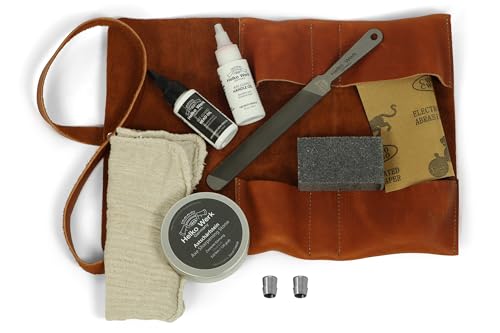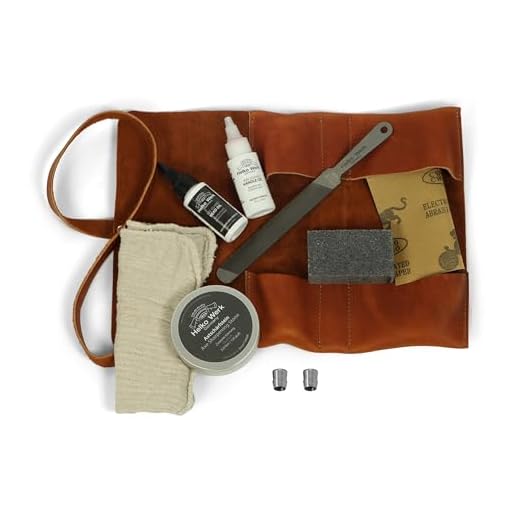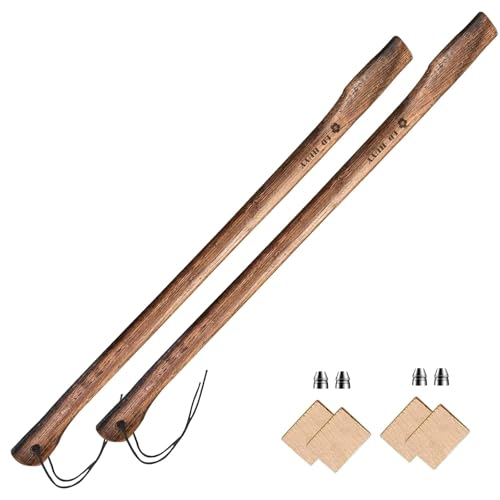


Discovering ancient tools can give us a remarkable insight into the lives of our ancestors. Among the most iconic of these tools is the stone age hand axe. Used by early humans for hunting, butchering, and woodworking, these hand axes were a fundamental part of their survival.
Making a stone age hand axe is not only a fascinating project but also a fantastic way to connect with our distant past. By following a few simple steps, you can create your own replica of this essential tool and experience the skill and craftsmanship of our ancestors firsthand.
Step 1: Choose the right material
The first step in making a stone age hand axe is selecting the right material. Early humans typically used stones such as flint, quartz, or obsidian, which are hard and durable. Look for stones with a smooth texture and dense structure.
Tip: Look for stones around riverbanks or in areas where erosion occurs. These locations are likely to have a variety of suitable stones.
Step 2: Shape the stone
Once you’ve found the perfect stone, it’s time to shape it into a hand axe. This process involves removing flakes from the stone until you achieve the desired shape. Start by striking the stone with a harder material, such as another stone or a hammer, to create flakes.
Tip: Be patient and allow the flakes to come off naturally. Rushing this process may result in a less effective hand axe.
Step 3: Sharpen the edges
To use your hand axe effectively, it’s crucial to have sharp edges. Use a smaller stone or rock to carefully sharpen the cutting edges of your hand axe. Take your time and ensure that the edges are symmetrical and evenly sharpened.
Tip: Test the sharpness of the edges by gently running your finger along them. Be cautious to avoid injury.
By following these steps, you can create your very own stone age hand axe. This ancient tool not only offers a glimpse into our past but also provides a tangible connection to the skill and ingenuity of our earliest ancestors.
Discover the fascinating world of stone age tools
The Stone Age, also known as the Paleolithic Era, was a time period in human history characterized by the use of stone tools. These tools were essential for survival and played a crucial role in the development of human civilization.
Stone age tools ranged from simple hand axes to more complex tools, such as spearheads and scrapers. These tools were made by carefully chipping away at rocks to create sharp edges, allowing early humans to hunt, gather, and build shelters.
One of the most iconic stone age tools is the hand axe. Hand axes were versatile tools that were used for a variety of tasks, including cutting, digging, and woodworking. They were made by carefully shaping a stone into a symmetrical and sharp-edged tool.
To create a hand axe, early humans would first choose a suitable stone, such as flint or obsidian, which had a durable and fine-grained structure. They would then carefully chip away at the stone using another rock or bone, shaping it into the desired form.
| Advantages of Stone Age Tools | Disadvantages of Stone Age Tools |
|---|---|
| 1. Versatile and multi-purpose | 1. Limited in functionality |
| 2. Durable and long-lasting | 2. Required skill and time to make |
| 3. Accessible and abundant materials (stones) | 3. Lack of precision and fine-tuning |
| 4. Played a crucial role in survival and development | 4. Difficult to repair or modify |
The use of stone age tools revolutionized early human society, enabling them to adapt and thrive in a harsh and challenging environment. The discovery and study of these tools help archaeologists and anthropologists understand the lifestyle, technology, and culture of our ancient ancestors.
Today, stone age tools continue to fascinate and intrigue us, serving as a reminder of the ingenuity and resourcefulness of early humans. By studying these tools, we can gain a deeper appreciation for our ancient past and the remarkable achievements of our ancestors.
Gathering Materials
Before you can begin making a stone age hand axe, you will need to gather the necessary materials. Here are the items you will need:
- A suitable piece of stone – Look for a dense and hard stone that is easy to shape. Flint, chert, or obsidian are commonly used in making stone tools.
- A hammerstone – This is a hard rock that you will use to strike the stone and shape it into an axe.
- A suitable location – Find a flat surface or workbench where you can safely work on your hand axe.
- Protective gear – It’s important to wear gloves and eye protection while working with stone to prevent injuries.
- Optional: Leather or cord – These materials can be used to create a handle for your hand axe if desired.
Once you have gathered all of these materials, you will be ready to start the process of making your stone age hand axe.
Find the right type of stone for your hand axe
To make a stone age hand axe, it is important to choose the right type of stone. The stone you select should be hard, durable, and suitable for shaping into an axe. Here are some tips to help you find the perfect stone:
- Look for stones that are dense and heavy. These stones will provide the strength and durability needed for a hand axe.
- Choose stones with a fine-grained texture. Stones with a fine-grained texture are easier to shape and will hold a sharp edge.
- Avoid stones with cracks, seams, or other natural imperfections. These flaws can weaken the stone and cause it to break when used as a hand axe.
- Consider using flint or chert, which are commonly used for making stone tools. These stones are known for their hardness and ability to hold a sharp edge.
- Take into account the color of the stone. While the color does not affect the functionality of the hand axe, some people prefer a certain aesthetic appeal.
Remember, the right type of stone is essential for making a functional hand axe. Take your time to find a suitable stone that meets all the criteria mentioned above. Once you have found the right stone, you are ready to begin shaping it into a stone age hand axe.
Shaping the Axe Head
Once you have selected a suitable stone for your hand axe, it’s time to start shaping the axe head. This process requires patience and precision, as the final result will determine the effectiveness of your tool.
Begin by identifying the desired shape of your axe head. The most common shape is that of an elongated oval, with a rounded edge opposite the cutting edge. This shape allows for a better grip and control during use.
Using a smaller stone or antler, start chipping away at the edges of the stone to create the desired shape. It is important to remove small flakes of stone at a time, using controlled and deliberate strikes. Take breaks to evaluate the progress and adjust the shape as needed.
As you shape the axe head, pay close attention to the cutting edge. This edge should be straight and sharp to ensure effective cutting. Continually test the edge by gently running your finger along it to check for smoothness and sharpness.
While shaping the axe head, it is crucial to maintain the overall balance of the tool. Ensure that the weight distribution is centered and that there are no large irregularities that could affect its usability. This will help prevent unnecessary strain on your hand and arm when using the axe.
Once you are satisfied with the shape and balance of your axe head, it’s time to move on to the next stage of the construction process – hafting the axe head to a handle.
Remember, shaping a stone age hand axe requires practice and skill. Take your time and don’t rush the process – a well-crafted axe head will greatly enhance your efficiency and productivity in various tasks.
Learn the techniques to create a sharp and sturdy axe head
Creating a stone age hand axe requires precision and patience. The axe head is the most crucial part of the tool, as it determines its sharpness and durability. Here, we will guide you through the techniques to create a sharp and sturdy axe head.
Gathering the right materials
Before starting the process, gather the necessary materials. Look for a suitable stone that is dense and easy to shape, such as flint or chert. These rocks have the right hardness and conchoidal fracture, which makes them ideal for tool-making. You will also need a hammerstone or antler billet for striking the stone during shaping.
Shaping the axe head
To shape the axe head, start by removing any rough edges or unwanted parts from the stone. Use the hammerstone or antler billet to strike the edges of the stone, gradually shaping it into the desired form. Remember to flip the stone periodically to ensure even shaping on both sides of the axe head.
Once the basic shape is achieved, focus on refining the edges and creating a sharp cutting edge. Utilize precise strikes and careful flake removal to create a thin and sharp edge. Take your time during this step to avoid mistakes or accidental damage to the axe head.
Safety tip: Always wear safety goggles and work in a well-ventilated area to protect yourself from flying rock chips and dust.
After shaping the axe head, use sandstone or water to polish and smooth the surface. This will enhance its durability and sharpness. Keep in mind that the final product should be symmetrical and balanced for effective use as a tool.
Creating a sharp and sturdy axe head requires practice and attention to detail. Follow these techniques carefully, and you will be able to craft your own stone age hand axe with a sharp cutting edge and durability.
Creating a Handle
After you have shaped your stone into a suitable axe head, it’s time to create a handle. The handle will provide a sturdy grip for the stone age hand axe and make it easier to use for various tasks.
Here’s a step-by-step guide on how to create a handle for your stone age hand axe:
- Select a suitable piece of wood for the handle. It should be strong and durable enough to withstand the force applied during use.
- Cut the wood to the desired length, keeping in mind the size of the axe head and the comfort of your grip.
- Shape one end of the wood into a handle shape. This can be done using a knife or other sharp tool.
- Fit the handle into the slot on the axe head. Ensure a snug fit and adjust the size of the slot if necessary.
- Secure the handle in place using natural materials such as plant fibers or animal sinew. This will provide additional strength and stability.
- Use a cord or leather strap to wrap around the top of the handle where it meets the axe head. This will further secure the handle in place.
- Smooth out any rough edges or splinters on the handle to ensure a comfortable grip.
- Test the axe by swinging it gently to ensure it feels secure and balanced in your hand.
- Make any necessary adjustments to the handle length or shape to improve comfort and usability.
Once you have completed these steps, your stone age hand axe will be ready to use. Remember to always exercise caution when handling sharp objects and use appropriate protective gear if necessary.
Find out how to fashion a durable handle for your hand axe
When making a stone age hand axe, it’s important to have a sturdy and reliable handle to ensure that your tool is effective and long-lasting. Here are some steps to help you fashion a durable handle for your hand axe:
1. Choose the right material
The handle material plays a crucial role in the overall durability of your hand axe. You can use various materials such as wood, bone, or antler. However, wood is the most commonly used material for handles due to its strength, flexibility, and availability.
2. Select an appropriate wood
When choosing wood for your handle, it’s best to select a hardwood that is strong and dense. Oak, hickory, and ash are excellent choices. Avoid softwoods like pine, as they are less durable and prone to breaking.
3. Prepare the wood
Start by cutting a suitable length of wood for your handle. It should be long enough to provide a comfortable grip while leaving enough space for securing it to the axe head. Next, remove the bark and any rough edges using a knife or sandpaper. This will make the handle smooth and prevent splinters.
4. Shape the handle
Using a knife or carving tools, shape the wood into a handle that fits comfortably in your hand. Round out the grip area and taper the ends to match the shape of your axe head. Take your time to ensure a comfortable and secure grip.
5. Secure the handle
Place the axe head on top of the handle and mark the area where they will join together. Carve or drill a hole in the handle to accommodate the axe head. Make sure the hole is slightly smaller than the axe head to create a tight fit. Insert the axe head into the hole and secure it with glue, pitch, or a combination of both.
6. Finishing touches
Smooth out any rough spots or imperfections on the handle using sandpaper. Apply a protective finish such as linseed oil or varnish to enhance the appearance and durability of the handle.
Following these steps will help you create a durable handle for your stone age hand axe, ensuring that your tool is ready for the tasks ahead.







